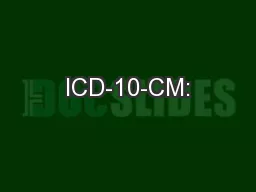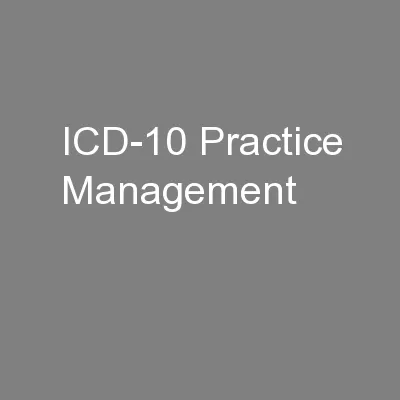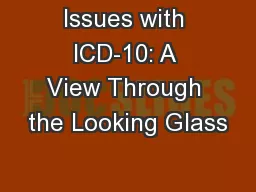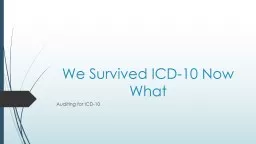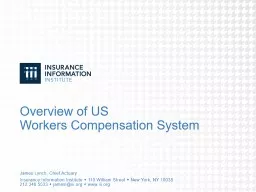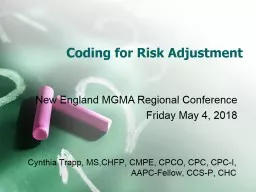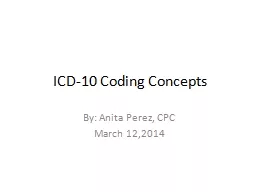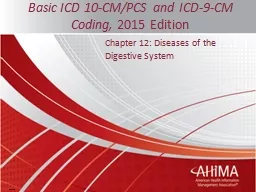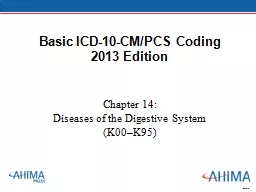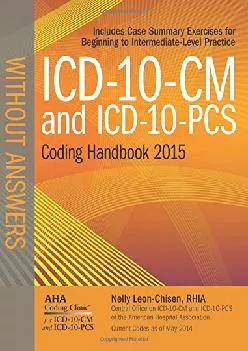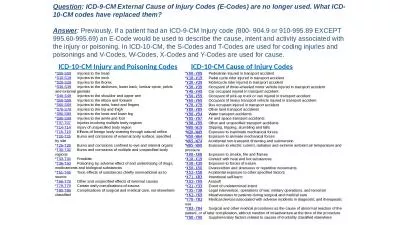PPT-ICD-10 Coding in the Workers’ Compensation Industry: Update
Author : DreamCatcher | Published Date : 2022-08-04
Shelley Reese RHIT Medical Reimbursement and Coding Policy ICD10 was released in 1992 May countries have already adapted to ICD10 Society and technology has
Presentation Embed Code
Download Presentation
Download Presentation The PPT/PDF document "ICD-10 Coding in the Workers’ Compensa..." is the property of its rightful owner. Permission is granted to download and print the materials on this website for personal, non-commercial use only, and to display it on your personal computer provided you do not modify the materials and that you retain all copyright notices contained in the materials. By downloading content from our website, you accept the terms of this agreement.
ICD-10 Coding in the Workers’ Compensation Industry: Update: Transcript
Download Rules Of Document
"ICD-10 Coding in the Workers’ Compensation Industry: Update"The content belongs to its owner. You may download and print it for personal use, without modification, and keep all copyright notices. By downloading, you agree to these terms.
Related Documents


